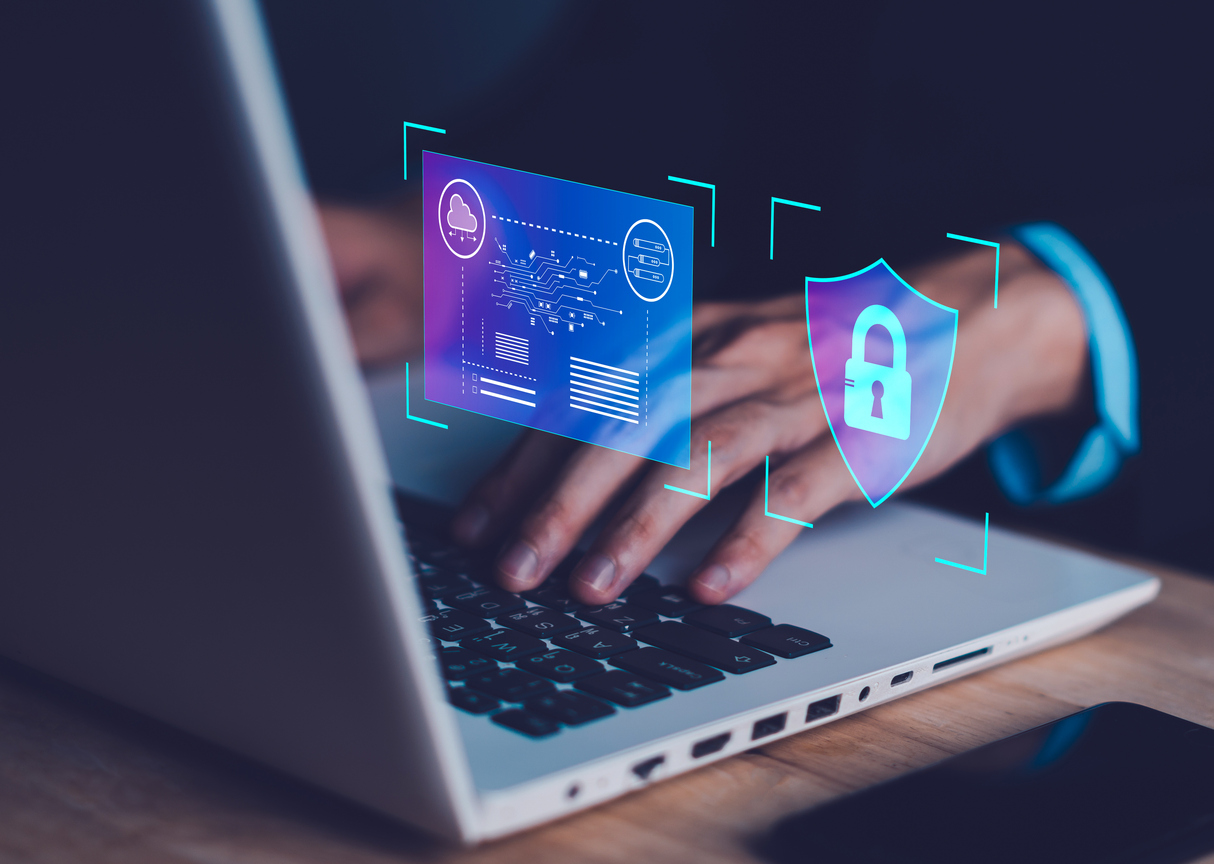
Automated compliance ops can help organizations to adopt a more dynamic approach to cybersecurity.
Effective cyber compliance process management is critical for organizations to ensure their information technology environments, applications and systems adhere to the regulations that govern their industry and geographical area. With regular reviews and evidence reports, executive leaders can measure the effectiveness of their compliance programs, highlight risks that have not adequately been addressedand strategize how to address those issues.
While overseeing this all manually was once viable, the evolution of the cyber threat landscape, the sprawl of enterprise digital presences, and the complexities of regulatory frameworks have changed the reality.
“For years, cybersecurity professionals, particularly Chief Information Security Officers (CISOs), have had to rely on spreadsheets to manage the ever-growing landscape of cyber risks. While the need for a more streamlined solution was evident, the challenges were, until recently, considered manageable without specialized software. But times have changed, and so the demands have been placed on CISOs,” writes Arik Solomonco-founder and CEO of Cypago, a company that specializes in cyber GRC automation.
“Over the past year, the cybersecurity landscape has undergone a seismic shift,” he continues. “CISOs now face an overwhelming number of controls stemming from multiple frameworks, with data scattered across various cloud environments. Operational costs are climbing, and the stakes have never been higher—personal liability for security breaches is now a genuine concern.”
Cyber compliance reports are essential in many industries, but manually producing them using traditional tools such as Excel is a lengthy, labor-intensive process. The task of Collecting and collating all of the data needed for a report can take weeksdepending on the organizationetc there’s a lot of potential for human error along the way.
By introducing a degree of automation into the process, compliance reporting can be done much faster, more rigorously and with greater accuracy. More importantly, it can help organizations transition to a continuous reporting structure that provides a real-time snapshot of their current state of compliance.
Compliance informs cybersecurity
Cybersecurity governance, risk and compliance (also known as “cyber GRC”) Management is about much more than just checking boxes and passing audits. It’s about giving a structure to holistically overseeing organization’s security posture.
By earning compliance badges, organizations can demonstrate that they adhere to regulatory requirements of Industry-specific mandatory frameworks like SOX and HIPAA and to the “best practices” guidelines of recommended frameworks like SOC 2 and NIST CSF 2.0. This is necessary for companies to avoid heavy fines for non-compliance and prove to investors and customers that they take cybersecurity extremely seriously, helping them to attract more capital and increase their customer base.
In addition, maintaining compliance can help organizations to better define their cybersecurity strategies. Most leadership teams know the basic ins and outs of cybersecurity and have comprehensive systems in place, ready to move quickly in response to any incidents that occur. But there are many who fail to grasp the importance of implementing a robust compliance strategy, which can pave the way for a more proactive approach to security.
Information technology governance frameworks such as ISO/IEC 27001 offer structured principles and guidelines for organizations to align their security and privacy practices with business objectives. Furthermore, they can form the basis of a roadmap that can be used to identify potential threats and formulate strategies to counter them. With a framework to adhere to, it becomes much easier to pinpoint vulnerabilities within the organization’s cybersecurity posture.
By using compliance as a guide for cybersecurity, companies can develop a more flexible security model and continuously update it to reflect the reality that the landscape threat is always in flux, as attackers constantly switch up their tactics. Cybersecurity has been around for a long time been seen as a game of cat and mouse, and security teams must have the foresight to predict and respond to new attack vectors the moment they emerge.
Cyber GRC not only aids in thatbut it can also help to increase awareness of cybersecurity across the entire organization, encouraging workers to be more responsible and take up the best practices needed to minimize risks. The trick is to implement a compliance strategy that’s it proactive by design, enabling security teams to always stay on top of their responsibilities.
Manual compliance is a measuring
Implementing and adhering to cyber GRC requirements has traditionally been a manual and time-consuming process. At many organizations, IT environments are extremely messy, with dozens of proprietary applications mixed with third-party software-as-a-service apps and systems, hosted on various cloud infrastructure platforms. While all of these tools are ostensibly linked to one another by way of the organization’s network, the dynamics of documenting and controlling it all can be overwhelming.
For compliance teams, the task of mapping out and managing these systems is often a nightmare, especially when they have to consider other aspects of their IT environments, such as user access controls, third-party access to critical resources, server infrastructures, software codebases, databases, and network endpoints.
Most compliance teams rely on manual tools such as Excel spreadsheets to keep track of all of their systems, apps and code. It’s a laborious, time-consuming and error-strewn task that involves documentation and mapping out every branch of the organization’s IT environment. What’s more, compliance teams can’t do it alone. They require constant assistance from various other stakeholders within the organization.
That’s it why security and compliance teams often complain they’re stuck in “firefighting mode,” chasing anus other departments for lists of users, cloud environments, code libraries and the rest of the data they need for their audits, constantly racing to meet deadlines.
This is the very essence of having a “reactive” compliance strategy, in which everything is done after the fact, and it’s hugely inefficient. Even in a best-case scenario, the evidence of compliance only represents a snapshot of the organization at the point in time in which the data was collected. It means compliance is never up to date and must be endlessly repeated.
Of course, the repetitive nature of manual and reactive compliance inevitably leads to complacency creeping in, with mistakes creating holes in the organization’s cyber defenses.
Automation makes a difference
Some pioneering organizations are leading by example with more innovative and proactive compliance measures, taking advantage of cyber GRC automation to eliminate the never-ending drudgery.
Automation can transform the nature of compliance. By tightly integrating all of the disparate applications, services, tools and infrastructure a company uses, the data needed for reports can be collected automatically, on an ongoing basis, where it can be analyzed in real-time to certify systems are in compliance and surface any issues that need to be addressed.
Doing this requires the adoption of powerful orchestration tools that integrate with common software-as-a-service, platform-as-a-service and infrastructure-as-a-service platforms, so teams can quickly compile the data they generate. Integrating with Okta, for instance, makes it possible to see at a glance who has access to different systems, applications and networkswhile of integration with GitHub will reveal which codebases are in use.
By analyzing these data streams, teams can generate an up-to-second overview of their compliance posture as it is right now, then assign individuals to perform follow-up tasks, and certify individual systems as compliant. This approach is also much more flexible, as the process can be tailored to omit unnecessary data and systems, such as non-production databases that fall outside of the team’s remit.
Most crucially, this level of automation all but eliminates the need for employees to sift through long lists of data points, trying to understand the different issues they face and assign a level of urgency to each one.
It becomes possible to identify problems as soon as they appear and prioritize them accordinglybased on the frameworks they need to adhere to and their business risk priorities. Because teams are no longer spending Hours trawl through Excel spreadsheets, they have more time to focus on higher level work.
The very nature of automated compliance is proactive, and it has positive implications for that organization’s overall cybersecurity posture. By making order of various frameworks, running continuous risk analysis and mapping out all of the controls and permissions needed for everything to keep ticking over, companies can establish a more secure baseline. Up-to-date evidence reports can be exported as needed, and user access requests can be fully automated to safeguard the network.
Then it’s just a matter of keeping an eye on automated continuous monitoring to make sure everything is running as it should.
Proactive compliance sharpens security
Automating the compliance process means companies can integrate robust security from the get-go, make sure that every stakeholder is aligned with the organization’s security objectives and following the regulatory standards they are obligated to follow.
It can take a lot of effort to convince chief information security officers to abandon the manual practices and processes they’re familiar with, especially if the organization has not yet suffered a major security breach under his or her watch. Yet, the cumbersome nature of traditional compliance methodologies, with all of the firefighting that’s it required to deal with resource sprawl and shadow IT, makes it all but inevitable that mistakes will be made somewhere along the way.
Forward-thinking CISOs can avoid this by using automation to gain full control of them organization’s security posture and benefit from stronger assurances that their systems and applications are always compliant and secure. In the game of cybersecurity cat and mouse, automated compliance can help to supercharge organizations and ensure they’re always one step ahead.





